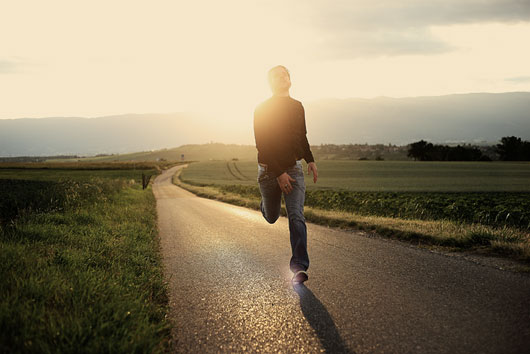In The Studio: Luciano—With a newly minted studio in Switzerland, Lucien Nicolet expands on his global sound.
Since the beginning of the decade, Lucien Nicolet (a.k.a. Luciano) has risen in the ranks […]

Since the beginning of the decade, Lucien Nicolet (a.k.a. Luciano) has risen in the ranks to become one of the premier DJs and producers in the world, releasing countless records and highly regarded remixes, many of which found release on his acclaimed label, Cadenza. Along with a dizzying club schedule, it’s hard to fathom how Nicolet manages to find time to create music, but with his latest full-length, Tribute to the Sun, the Chilean-Swiss producer has brought the world to his listeners’ ears. Ranging from icy European techno and ambient warbling to sweaty African workouts and street-inspired South American jams, Nicolet’s third album is an eclectic, global compilation of sounds that truly does represent the much-traveled DJ’s globetrotting ways. XLR8R caught up with Luciano by phone at his new Swiss home near the French border.
?XLR8R: We’ve heard that you’ve just rebuilt your studio.
?Luciano: Yes. The thing is that I just moved houses again, and so I decided to move the studio into the new space. It’s really good, but I still have to get used to it. Like, just now I was trying to compose, but I have my son always coming in and saying, “Can I play, can I play?” And so just to install a little bit, and get back into that rhythm of work and feeling… it takes a little while. But I’m very happy with it!
So is there any new equipment?
?Well, I have a lot of new equipment, but it’s more a mixture of old and new. It’s sort of like a bridge between two worlds that took me a long time to build and to realize, like, I just finished work on a huge patch bay that will allow me to work between those two worlds—the digital and the analog.
The new album uses a lot more live instrumentation. What were the some of the challenges involved in working more with live sounds?
?It was more something that I did in three or four years, traveling a lot and playing a lot in different places. While I was traveling, I was making a lot of music, depending on where I was, so the album is more of a compilation to me of what I’ve been doing in the past few years. But behind all this, I wanted to make something to represent different places I’ve been to, and sounds that I really wanted the music to reflect.
That definitely shows. It has a global sound.
?Exactly. It was meant to be sort of eclectic, from electronic to more traditional sounds, with some ambient interludes here and there to provide transitions between tracks.
So what would you consider the most essential pieces of gear in the studio??
My speakers. They’re very special and handmade [by Martin Audiosystems]. They’re the most important thing, since the sound that you get from them is going to define what the listener hears. Then I have an old Studer mixer that I got from a radio station. That mixer is really my little magic piece, and then I have other little mixers to fine-tune certain sounds. Of course, compressors and sound modules are all over the place, too. What’s interesting for me, though, is to merge both worlds. Like, take out what you can do from the digital—for example, if you work a lot on plug-ins and whatnot, it’s great to start digitally and then drop them through analog systems and bring them up as an analog mix. I also have lots of older synths and modules that allow me to bring a different sort of sonic dynamic that you can’t get with digital equipment. But I think that the most important thing, really, is the room. The room is what defines and gives shape to the music and its levels.
What are your future plans for your work?
?For four or five years I’ve had this idea of doing an album without any kick drums, based more on sonic atmospheres and stuff like that. It’s still danceable, like, I just played one of the tracks at Fabric and it really worked out, but it has no kick drums. It has very strong atmospheres and melodies, and so that’s what I’m really trying to push for at the moment. The polyrhythmic elements are there, and give the music so much of its tension, but the melody gives any track its direction, really. That’s what I love about melody, in that you can be doing something that seems pretty monotone, then drop a little melody and it opens up whole new worlds, a whole new emotional thing, and that’s really the best part of music. ?
Luciano’s Gear List:
• Studer 28-track mixer
• Manley Slam compressor
• Soundcraft GB8 Series 48-Channel Large Venue Mixing Console
• Neve 8816 16:2 Summing Mixer
• Moog Voyager synth
• Roland JP-8000 synth
• Vermona DRM-1 analog drum machine
• Native Instruments Maschine

• Ensoniq DP/4 effects processor
• Eventide H8000 Ultra-Harmonizer
• E-mu Xtreme Lead-1 synth
• Nord Lead 2X Rack Sound Module
• Korg Radias synth vocoder
• Roland VariPhrase processor


